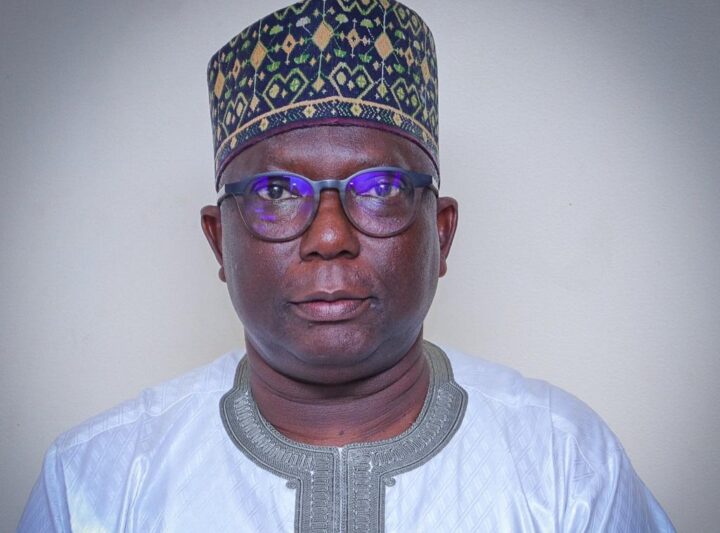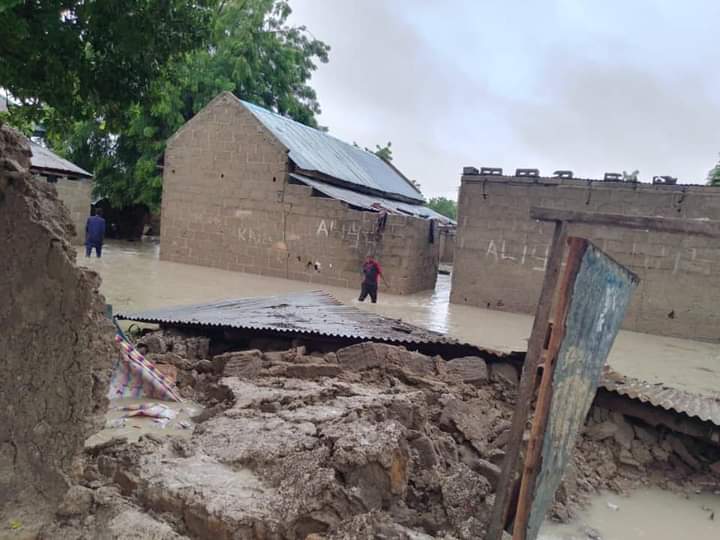R-L; Nigerian President Muhammadu Buhari, Netherlands Prime Minister, H.E Mark Rutte, Bank of England Governor, Mr Mark Joseph Carney and Chief Executive Officer of Wills Towers Waston, Mr. John Haley during the UNGA74 Climate Change Summit 2019 in New York. PHOTO; SUNDAY AGHAEZE. SEPT 23 2019.
For a country that is signatory to international climate change treaties, like the Paris Agreement, one would easily conclude that Nigeria would prioritise greenhouse gas (GHG) emissions reduction as a way to show its commitment.
This is because in the global fight against climate change, it has been widely agreed that one of the major things countries must do to bring temperature rise within 1.5C is to reduce GHG emissions, in addition to adopting renewable energy.
However, according to data from Nigeria’s first GHG inventory published in March 2021, the country’s GHG removal reduced by 23 percent within the period between 2000 to 2017 while its emissions continued to rise within the same period.
The University of Oxford defines GHG removal as the process of ejecting carbon dioxide or its equivalent from the atmosphere through techniques like biological approaches, such as planting trees and increasing the amount of carbon stored in the soil, and engineered approaches, such as enhancing the rate at which certain minerals weather and devices that directly capture CO2 from the air.
Advertisement
The academic body states that GHG removal is very key in the global goal of achieving net-zero by 2050. Reason being that GHG causes global temperature rise, thereby accelerating climate change and its impacts. Countries have, therefore, made and continue to make commitments on net-zero – a process whereby the amount of GHG emitted into the atmosphere is equal to the amount removed from the atmosphere.
Nigeria is not left behind in this. In 2021, the country made two major moves that caught global attention: first was to commit to net-zero by 2060, and secondly was to sign into law its climate change bill. The country has also gone ahead to unveil its energy transition plan, update the Nigeria energy calculator and launch its long-term low emissions strategy, among other things.
All these projects aim to ensure that Nigeria reduces its carbon footprint as well as achieve a sustainable low-carbon and climate-resilient development. This article looks into Nigeria’s greenhouse gas inventory and the GHG removal recorded within the years published.
Advertisement
NIGERIA’S GHG REMOVAL REDUCING, INSTEAD OF INCREASING
While Nigeria’s first GHG inventory was published in 2021, the document only captured 2000 to 2017. 2018 upwards was not in the document.
Within the period published, the total GHG emissions recorded a 46 percent increase. But on an individual calculation, the different gases reported had different significant percentage increases – carbon dioxide 56 percent, methane 23 percent and nitrous oxide 65 percent.
According to the inventory, the main contributor to the national GHG emissions was CO2, accounting for about 68 percent of the total emissions in 2017 alone.
Advertisement
Most of these carbon emissions came from the Agriculture, Forestry and Other Land Use (AFOLU) sector; followed by energy, Industrial Processes and Product Use (IPPU) and waste sectors.
The data also showed that the emissions removal that was recorded within the 18 years period only came from the AFOLU sector. This shows that the country has not been intentional about reducing its carbon footprint in the energy, industrial and waste sectors.
Meanwhile, emissions in these sectors have continued to increase with energy, AFOLU and waste recording a 100 percent increase in methane emissions – a GHG considered more potent than carbon dioxide and responsible for around 30 percent of the rise in global temperatures.
For the period not captured in the document, further research showed that Nigeria’s GHG emissions either increased or decreased in the years leading up to 2016 but has, however , been on a steady rise since that year.
Advertisement
According to Carbon Brief, Nigeria emitted 104.27 MtCO2e in 2018 – This figure represents an increase of 271.6 percent from 1990 levels. It added that of Nigeria’s total GHG emissions in 2016 (481.02 MtCO2e), the majority of its composition is comprised of carbon dioxide at 61.74 percent, followed by methane at 27.82 percent, nitrous oxide at 7.77 percent, and fluorinated gas at 2.66 percent.
WHY IS NIGERIA’S GHG EMISSIONS INCREASING AND REMOVAL DECLINING?
Advertisement
In 2015, Nigeria was ranked the world’s 17th biggest emitter of greenhouse gases and the second highest in Africa after South Africa, according to Carbon Brief. This is largely because the country is heavily dependent on fossil fuels for its economic development.
Experts believe that factors such as population growth, deforestation and economic development have led to the increase in GHG emissions over the years. But in the face of this development, no practical reduction measures were put in place, thus emissions removal was reducing instead of increasing while GHG emissions increased
Advertisement
The International Energy Agency (IEA) states that more than one in three people in Nigeria lack access to electricity, instead, many rely on the burning of wood. This heavy reliance on wood for fuel is a major driver of deforestation in Nigeria.
Global Forest Watch estimates that from 2010 to 2019, Nigeria lost 86,700 hectares of tropical forest, releasing the equivalent of 19.6 MtCO2.
Advertisement
Ayodeji Okunola, an energy systems professional, said this massive deforestation in the past decade has led to the loss of Nigeria’s forests which naturally should serve as carbon sinks for these greenhouse gases .
“Deforestation in the north over the last 10 years has been massive. We need forests as carbon sinks and the country seems to be losing much of it,” Okunola said.
“Furthermore, Nigeria’s economic growth has been reliant on emissions-intensive energy conversion technologies. As a result, one cannot compare what happened in the initial years of post-military government to periods of significant economic and population growth.”
FAILING IN ITS COMMITMENTS
Nigeria under the Paris Agreement pledged to reduce its greenhouse gas emissions. In one of his Twitter posts in 2019, President Muhammadu Buhari said: “On climate change, Nigeria stands resolutely with the international community in observing agreed carbon emission targets which I signed in 2015.”
In July 2021, the country submitted an updated version of its nationally determined contribution to the United Nations Framework Convention on Climate Change (UNFCCC). In this document, the country increased its emissions reduction commitment from 45 percent to 47 percent if supported by developed countries. It, however, maintained its 20 percent reduction — if not supported — by 2030.
This commitment is despite submitting a GHG inventory, a few months before, that does not speak to the reality of achieving this goal.
Also, in 2020, Buhari said Nigeria has commenced the planting of 25 million trees to increase Nigeria’s forest cover and fulfill the country’s commitment at the 2019 UN assembly.
In a tweet, he said: “In order to improve our forest cover and in fulfillment of my commitment at the 74th Session of the United Nations General Assembly in 2019, we have commenced the planting of 25 million trees.This initiative will also contribute to our effort to mitigate the effect of climate change.”
But the progress of this is not certain as an investigation by Premium Times in 2021 showed that the federal government’s plan to plant trees in parts of Nigeria was a failure.
Okunola is of the view that Nigeria lacks the plan and sectoral strategy to achieve its NDCs “because right now, the priority is fixing Nigeria’s economy and putting the nation on the right footing.”
The energy expert’s point seems not far-fetched given the fact that the country’s climate change act, which was supposed to enable the mainstreaming of climate change action and provide for a more consistent emissions reductions approach, has not been implemented – seven months after Buhari’s assent.
Okunola also said that low-carbon transition might not be easy for Nigeria because the country is not financially buoyant and “clean energy is not cheap”
However, with the country’s current pledge for net-zero carbon emissions by 2060, it is hoped that the current GHG emissions which are on the high side will take a reverse trend in the coming years.
This report was produced under the 2022 Dataphyte fellowship.
Add a comment






